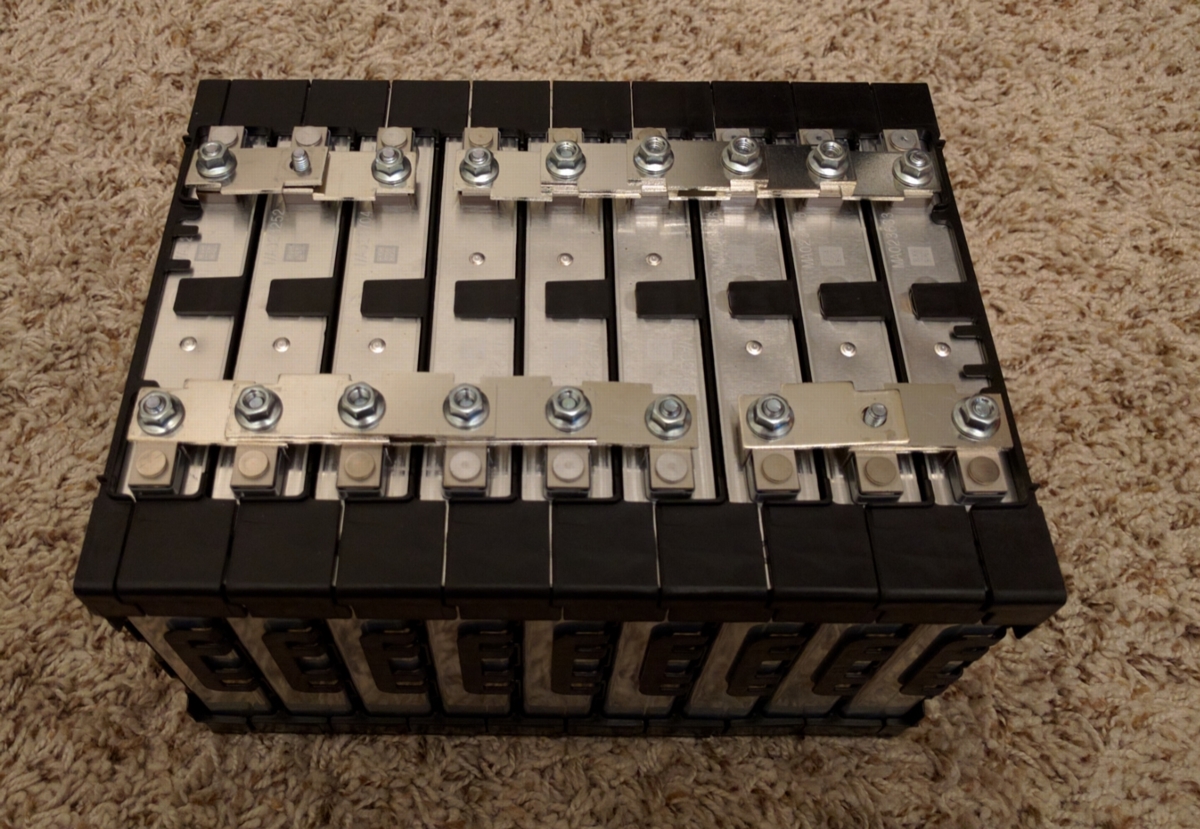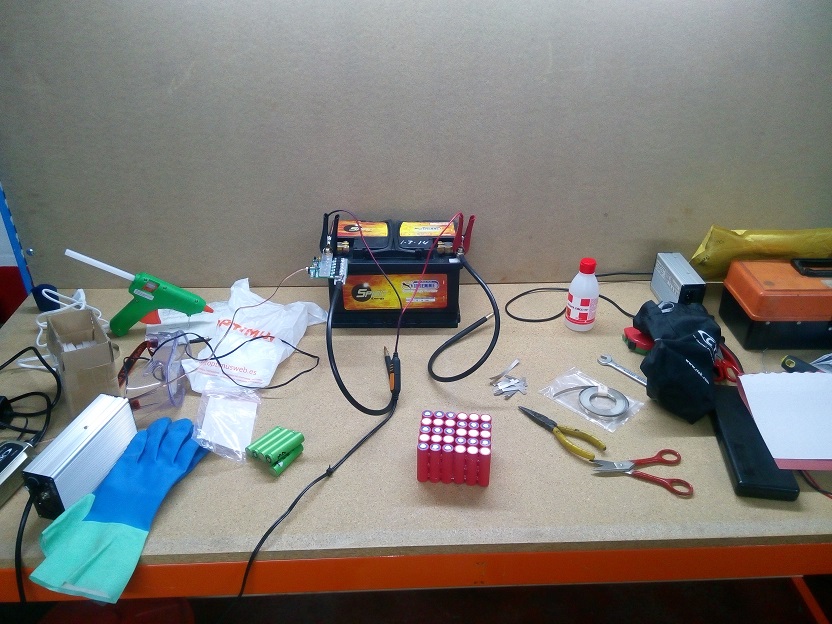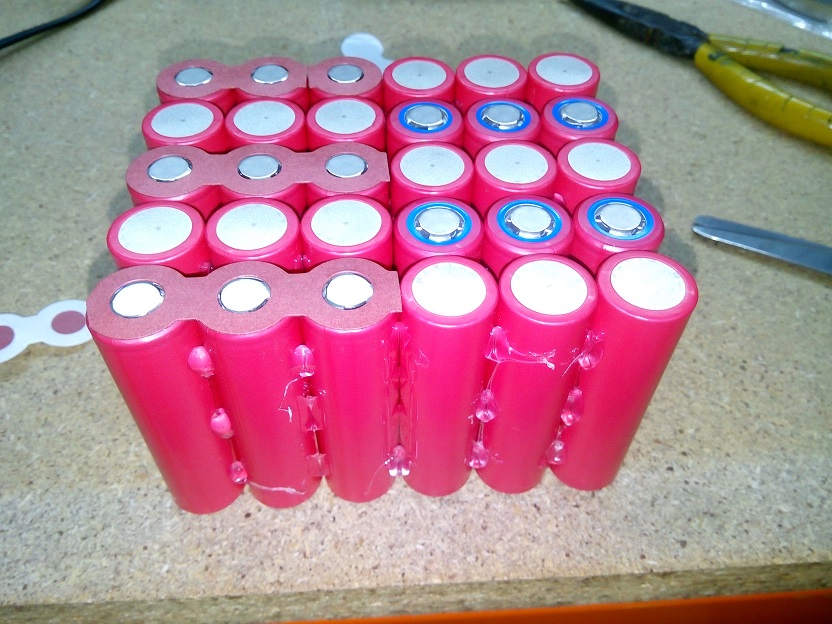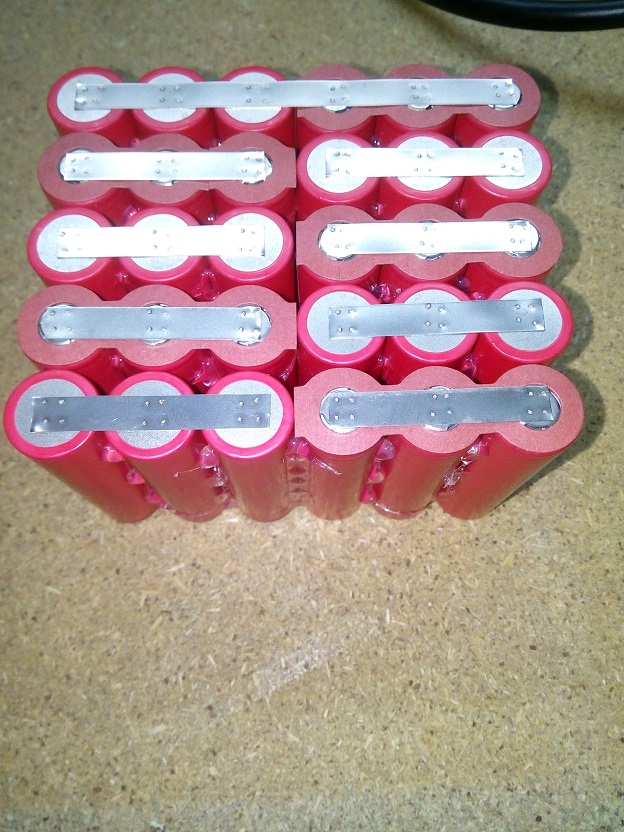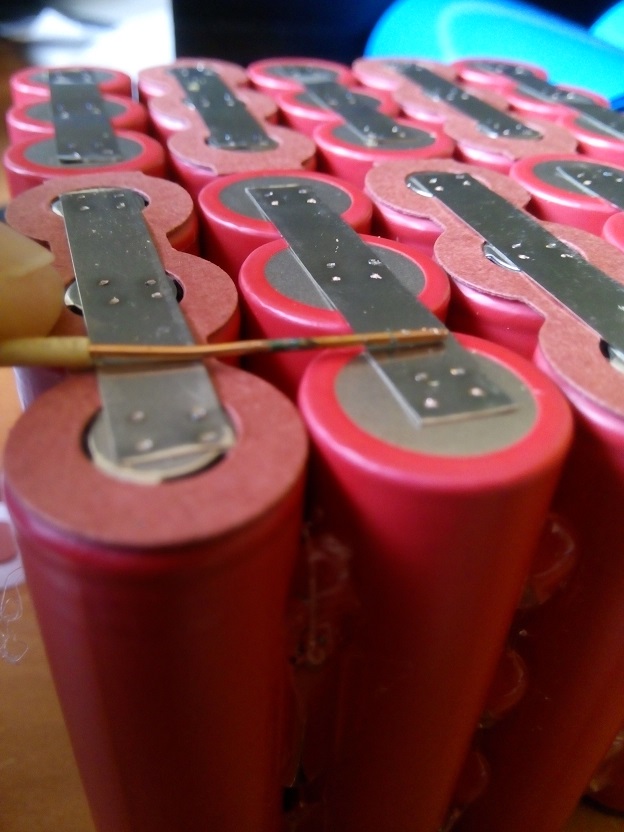fechter, you were helping me before with designing my pack with wires.
Each wires connects two cells to another two cells in series.
I connected half of the pack with wires as shown in the picture. All wires are equal length between series groups. I'll add a small balancing strip to all cells.
I have not done the other side.
My question is, do the same two exact cells need to be connected with the series wires to the other cells on the other side?
Or as long as I connect all 14 cells with the series wires, it doesn't matter which cells they connect to on the other side of the pack?
I don't think it would matter, but it is hard to figure out. And I may be overlooking something. I believe as long as I am pulling current from all wires it wouldn't matter.
I hope you understand what I am talking about here. The reason I don't want to use the same cells on the other side is because it makes it more difficult then if I just choose randomly.
Thanks. If anyone else understands then you can also comment.
On the bottom image you can see I started to connect the wires on the other side, but they do not match the exact cells from the other side.
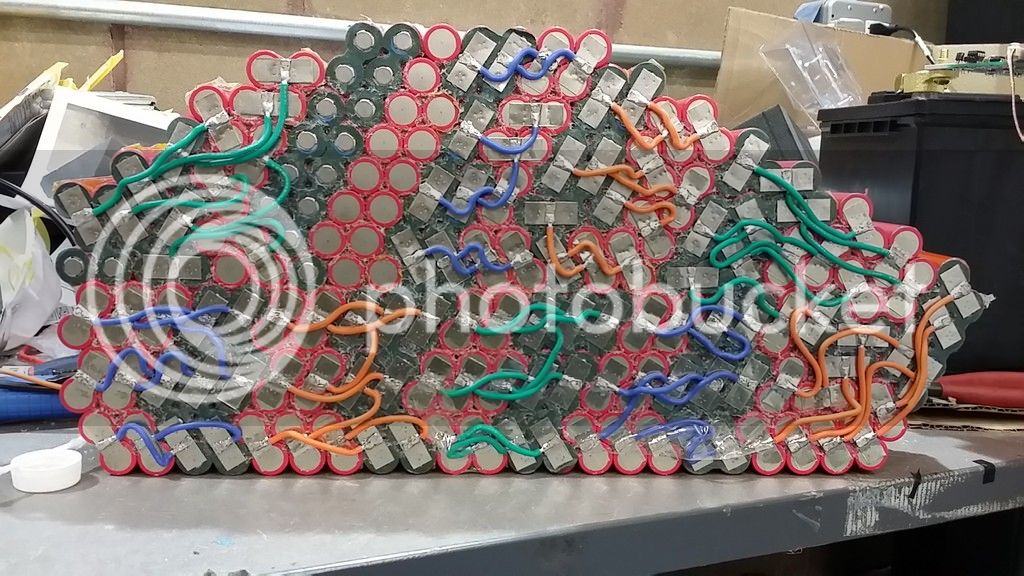

Each wires connects two cells to another two cells in series.
I connected half of the pack with wires as shown in the picture. All wires are equal length between series groups. I'll add a small balancing strip to all cells.
I have not done the other side.
My question is, do the same two exact cells need to be connected with the series wires to the other cells on the other side?
Or as long as I connect all 14 cells with the series wires, it doesn't matter which cells they connect to on the other side of the pack?
I don't think it would matter, but it is hard to figure out. And I may be overlooking something. I believe as long as I am pulling current from all wires it wouldn't matter.
I hope you understand what I am talking about here. The reason I don't want to use the same cells on the other side is because it makes it more difficult then if I just choose randomly.
Thanks. If anyone else understands then you can also comment.
On the bottom image you can see I started to connect the wires on the other side, but they do not match the exact cells from the other side.








